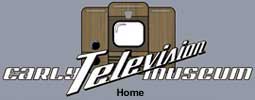Postwar Television DuMont Electronicam
Chuck Pharis' comments:
Pictures courtesy of Chuck Pharis
Courtey of Steve Dichter
|
 |
Postwar Television DuMont Electronicam
Chuck Pharis' comments:
Pictures courtesy of Chuck Pharis
Courtey of Steve Dichter
|